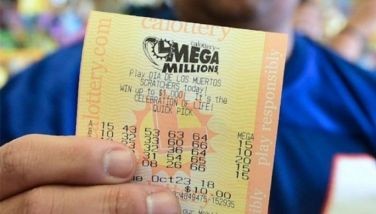Educators abdicating role in school sports
Last week, we highlighted some interesting insights we gathered from the book, “Until it Hurts: America’s Obsession with Youth Sports and How it Harms our Kids” written by Mike Hyman, a sports journalist-coach and sports parent who has immersed himself in the culture of youth sports.
In the last paragraph of last week’s column we stated that the founder of the world-famous Little League (which is mistakenly used as a model for how to run youth and children’s sports) eventually fought the concept and organization he founded because its misuse by adults could be harmful to children and youth in the long run.
We refer to Carl Stotz who started the first Little League baseball team in 1939. A bookkeeper for a lumberyard in Williamsport, Pennsylvania, Stotz was, according to Hyman, a dreamer who wasn’t particularly athletic and in fact looked like a man who spent most of his time indoors – thin and pale. Hyman adds that in Stoltz’s day, the idea of parents and other interested adults banding together to organize a youth sports league was undecidedly rare and, in many towns in the United States, unheard of.
Since parents were absent in the playing field and from the sports lives of their children, other adults – namely educators, recreation leaders and youth counselors, were present, according to Hyman. In the 1880’s, athletics for children thrived in public schools, the YMCAs and under the auspices of other religious and public institutions such as the Boy Scouts and the Boys’ Club.
This was the same educational system and physical education (PE) template that the Americans brought with them to the Philippines. At the turn of the century, the Spanish-American war extended to the Philippines, then a Spanish colony. The Spaniards were however defeated by the Americans in what could be characterized an “acoustic” battle of Manila Bay that laid the basis for the surrender by the Spaniards to the Americans.
The Spanish empire had by, 1898, all but collapsed and was already on the verge of being routed by the ragtag forces of Emilio Aguinaldo, when the Americans and the Spaniards conspired for the latter to surrender to the former than to the brown-skinned, uneducated, savages known as the Filipinos. In no time the American professionals, educators and missionaries came in by droves after long sea voyages from the US.
One such boat that ferried these Americans was the USS St. Thomas. The passengers of the St. Thomas who disembarked and later went to the far flung areas of the Mountain Province and Dumaguete in Negros Oriental came to be known as the Thomasites who brought in the American educational system, including school sports and physical education (PE).
While, as Hyman says, these organized sports and games were largely about fun and recreation and, for the winners, neighborhood bragging rights, for some, especially the YMCA, they were meant to save souls. In short, sport was used to evangelize and proselytize.
In 1903, the first organized sports league for boys had its start in the schoolyards of New York City, says Hyman. The Public Schools Athletic League began with 300 eager players. Seven years later, there were more than 150,000. By the 1930s, educators had become concerned. The emphasis on winning was too great, they warned. And the stress on the physical and mental strain of playing for championships was unhealthy for young players.
Hyman says that school sports programs were rethought and refocused. The old emphasis on competing and winning was replaced with the loftier goal of physical fitness for all students. Leagues withered and elementary schools and junior high schools dropped their competitive teams in favor of less competitive intramural sports. Into the void stepped parents. It was a profound moment and, argues sports historian Rainier Martens, “a gigantic blunder” on the part of educators.
Martens wrote in his book the “Joy and Sadness in Children’s Sports” (quoted by Hyman): “Ironically, educators suddenly found themselves no longer leading the movement they had begun. Instead of well-trained professionals guiding the sports programs of children, well-meaning but untrained volunteers assumed leadership roles. Sadly, educators were left on the sidelines shouting their unheeded warnings and criticisms.”
As was expected, parents brought with them a different mindset, as stressed by Hyman. Unencumbered by academic perspectives about the damage that intense sports could inflict on children, they set up leagues that dialed up the competition.
It was in this backdrop that Stoltz would later leave Little League. The truth of the matter was he was ousted from the same league he founded. Stoltz would later say: “I was utterly disgusted. Originally, I had envisioned baseball for youngsters strictly on the local level without national playoffs and World Series and all that stuff.”
Next week – dangers of early specialization.
- Latest
- Trending



























